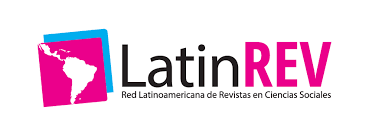Valoración ambiental del reciclado de residuos: El caso de Quilmes, Argentina
Resumen
El artículo analiza cuáles factores afectan significativamente la valoración ambiental en el campo del manejo de residuos sólidos domiciliarios en el distrito de Quilmes (Argentina). Se utilizan dos modelos econométricos basados en los métodos probit y probit ordenado. Se trabaja con la técnica de valoración contingente proponiéndose el tiempo esfuerzo como estándar para evaluar las preferencias de los individuos. La evidencia empírica muestra que el nivel de educación formal y la confianza en que el gobierno implemente una política adecuada de manejo de residuos inciden significativamente en la disposición a cooperar de la población; de igual manera se advierten diferencias de género en términos de la magnitud del esfuerzo que la población de Quilmes estaría dispuesta a realizar.
Palabras clave
Texto completo:
PDFReferencias
Arrow, K.; R. Solow; P. R. Portney; E. E. Leamer; R. Radner, and H. Schuman
(1993). “Report of the NOAA panel on contingent valuation.” Federal
Register, 58, 10, pp. 4601-4614.
Bateman, Ian; Richard Carson; Brett Day; Michael Hanemann; Nick Hanley;
Tannis Hett; Michael Jones-Lee; Graham Loomes; Susana Mourato;
Özdemiroğlu Ece; David Pearce; Robert Sugden and John Swanson
(2002). Economic valuation with stated preference techniques: A manual.
Massachusetts: Edward Elgar.
Hanley, Nick; Jason Shogren, and Ben White (1997). Environmental economics
in theory and practice. New York: Oxford University Press.
Hoehn J. and A. Randall (1987). “A satisfactory benefit cost indicator from
contingent valuation.” Journal of Environmental Economics and Management,
, pp. 226-247.
DuVair, Pierre and John Loomis (1993). “Household´s valuation of alternative
levels of hazardous waste risk reductions: An application of the
referendum format contingent valuation method.” Journal of Environmental
Management, 39, 2, pp. 143-155.
Hong, Seonghoon (1999). “The effects of unit pricing system upon household
solid waste management: The Korean experience.” Journal of Environmental
Management, 57, pp. 1-10.
Jin, Jianjun; Zhishi Wang and Ran Shenghong (2006). “Comparison of
contingent valuation and choice experiment in solid waste management
programs in Macao.” Ecological Economics, 57, 3, pp. 430-441.
Kipperberg, Gorm (2007). “A comparison of household recycling behaviors in
Norway and the United States.” Environmental and Resource Economics,
, pp. 215-235.
Morris, Glenn and Dunca Holthausen (1994). “The economics of household
solid waste generation and disposal.” Journal of Environmental Economics
and Management, 26, pp. 215-234.
Oliveira, Luciano Basto and Rosa Luiz Pinguelli (2003). “Brazilian waste
potential: Energy, environmental, social and economic benefits.” Energy
Policy, 31, pp. 1481-1491.
Sterner, Thomas and Helen Bartelings (1999). “Household waste management
in a Swedish municipality: Determinants of waste disposal, recycling, and
composting.” Environmental and Resource Economics, 13, pp. 473-491.
Tadesse, Tewodros (2009). “Environmental concern and its implication to
household waste separation and disposal: Evidence from Mekelle,
Ethiopia”. Resources, Conservation and Recycling, 55, pp. 183-191.
Troschinetz, Alexis and James Mihelcic (2009). “Sustainable recycling of municipal
solid waste in developing countries.” Waste Management, 29, pp.
-923.
Van den Bergh, Jeroen (2008). “Environmental regulation of households:
An empirical review of economic and psychological factors.” Ecological
Economics, 66, pp. 559-574.
Winship; Christopher and Robert Mare (1984). “Regression models with
ordinal variables.” American Sociological Review, 49, pp. 512-525.
Enlaces refback
- No hay ningún enlace refback.
ISSN 1315-2467 ISSNe 2343-5704
Redes Sociales
X: @revecono
Facebook: Revecono
Instagram: @revecono
| Se encuentra actualmente indizada en: | |||
 | |||
 |  | ||
 |  |  | |
 |  |  | |
![]()
Todos los documentos publicados en esta revista se distribuyen bajo una
Licencia Creative Commons Atribución -No Comercial- Compartir Igual 4.0 Internacional.
Por lo que el envío, procesamiento y publicación de artículos en la revista es totalmente gratuito.



